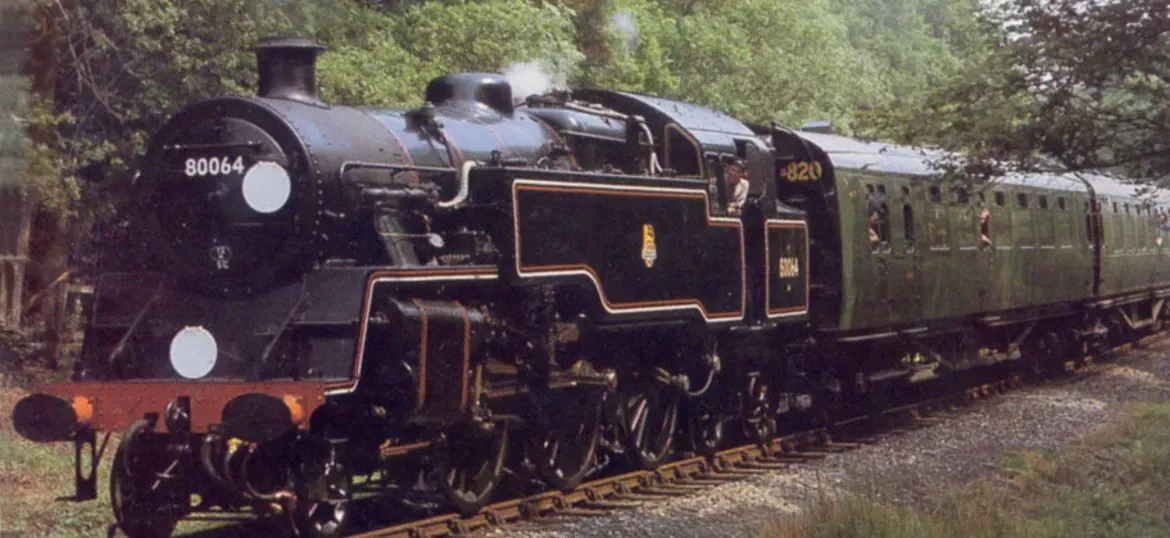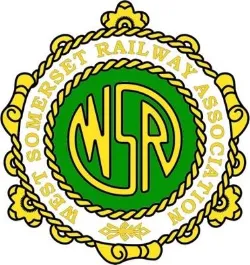Help to keep steam trains running in Somerset!
Joseph Rogers
My Story
Since 2018, I've been an active employee and then volunteer for the West Somerset Railway: England's longest heritage railway. In that time, the railway and its Association have given me so much in purpose, passion and a chance to work with its wonderful people. It has meant an awful lot to me and has defined my career and my interests.
So, 6 years after being the first recorded person to have run the length of the railway (visiting all 10 stations along the way), I'm thrilled to be running the 2025 London Marathon on behalf of the WSRA.
The West Somerset Railway Association are seeking funding to help pay for a heritage restoration project to repair a BR Standard Class 4MT steam locomotive 80064, with the intention of use on the railway within approximately 4 years.
80064, built in June 1953, is one of only 15 locomotives of this type preserved, the rest being scrapped. It was initially allocated to the London Midland Region before transferring to Southern Region ownership in December 1959 and then transferred to Exmouth Junction. It was withdrawn for scrap in 1965 before being purchased for preservation.
Locomotives of this type have been used on the West Somerset Railway in the past and proved ideal for the challenging gradients and heavy loadings experienced on the 20-mile route.
The West Somerset Railway welcomes some 300,000 visitors annually. It is a major attraction in West Somerset, the economy of which is heavily reliant on tourism, together with agriculture. The railway directly provides some 40 paid roles, supported by some 1,000 volunteers. Each year volunteers give over 50,000 hours to keep the Railway running. Many local jobs are supported by the railway’s supply chain, and in related businesses like accommodation and refreshment providers.
A trip on the WSR is an important part of the holiday of many visitors to West Somerset. Most travel the whole length of the line, from Bishops Lydeard near Taunton to the traditional seaside resort of Minehead.
For visitors, heritage railways offer an educational and nostalgic day out for young fans of trains and older enthusiasts. For volunteers of all ages, the railway provides a vital social lifeline and associated health and wellbeing benefits.
Care has been taken to ensure that this work is as sustainable as possible. 80064, designed in the 1950s, is more efficient in its coal consumption compared to most of the older pre-grouping designs of steam locos. It is worth noting that heritage railways in Britain contribute just 0.02% of the country’s total CO2 emissions and last year were visited by a total of 16 million people, demonstrating they are hugely popular and have little impact on environmental damage.
Contributions to 80064's restoration are much appreciated by those that work tirelessly to keep the heritage railway movement thriving, those that live locally and rely on the economical benefits it brings to the area and by those like me, who have benefitted from the enjoyment that both the WSR and Somerset as a county offer to those passionate for heritage and railways.
In addition to locomotive restoration of 80064 and GWR Small Prairie 4561, the WSRA also raise funds for track and ballast renewal, DMU restoration and the preservation of its period carriages, including the First Class Quantock Belle Dining Train (which I worked closely with during my time employed by the railway).
You can follow the restoration journey on the 80064 blog: https://wsra.org.uk/80064-blog/
(Header image by Mike Esau)
-
Target
£2,000
-
Raised so far
£218
-
Number of donors
11
My Story
Since 2018, I've been an active employee and then volunteer for the West Somerset Railway: England's longest heritage railway. In that time, the railway and its Association have given me so much in purpose, passion and a chance to work with its wonderful people. It has meant an awful lot to me and has defined my career and my interests.
So, 6 years after being the first recorded person to have run the length of the railway (visiting all 10 stations along the way), I'm thrilled to be running the 2025 London Marathon on behalf of the WSRA.
The West Somerset Railway Association are seeking funding to help pay for a heritage restoration project to repair a BR Standard Class 4MT steam locomotive 80064, with the intention of use on the railway within approximately 4 years.
80064, built in June 1953, is one of only 15 locomotives of this type preserved, the rest being scrapped. It was initially allocated to the London Midland Region before transferring to Southern Region ownership in December 1959 and then transferred to Exmouth Junction. It was withdrawn for scrap in 1965 before being purchased for preservation.
Locomotives of this type have been used on the West Somerset Railway in the past and proved ideal for the challenging gradients and heavy loadings experienced on the 20-mile route.
The West Somerset Railway welcomes some 300,000 visitors annually. It is a major attraction in West Somerset, the economy of which is heavily reliant on tourism, together with agriculture. The railway directly provides some 40 paid roles, supported by some 1,000 volunteers. Each year volunteers give over 50,000 hours to keep the Railway running. Many local jobs are supported by the railway’s supply chain, and in related businesses like accommodation and refreshment providers.
A trip on the WSR is an important part of the holiday of many visitors to West Somerset. Most travel the whole length of the line, from Bishops Lydeard near Taunton to the traditional seaside resort of Minehead.
For visitors, heritage railways offer an educational and nostalgic day out for young fans of trains and older enthusiasts. For volunteers of all ages, the railway provides a vital social lifeline and associated health and wellbeing benefits.
Care has been taken to ensure that this work is as sustainable as possible. 80064, designed in the 1950s, is more efficient in its coal consumption compared to most of the older pre-grouping designs of steam locos. It is worth noting that heritage railways in Britain contribute just 0.02% of the country’s total CO2 emissions and last year were visited by a total of 16 million people, demonstrating they are hugely popular and have little impact on environmental damage.
Contributions to 80064's restoration are much appreciated by those that work tirelessly to keep the heritage railway movement thriving, those that live locally and rely on the economical benefits it brings to the area and by those like me, who have benefitted from the enjoyment that both the WSR and Somerset as a county offer to those passionate for heritage and railways.
In addition to locomotive restoration of 80064 and GWR Small Prairie 4561, the WSRA also raise funds for track and ballast renewal, DMU restoration and the preservation of its period carriages, including the First Class Quantock Belle Dining Train (which I worked closely with during my time employed by the railway).
You can follow the restoration journey on the 80064 blog: https://wsra.org.uk/80064-blog/
(Header image by Mike Esau)






